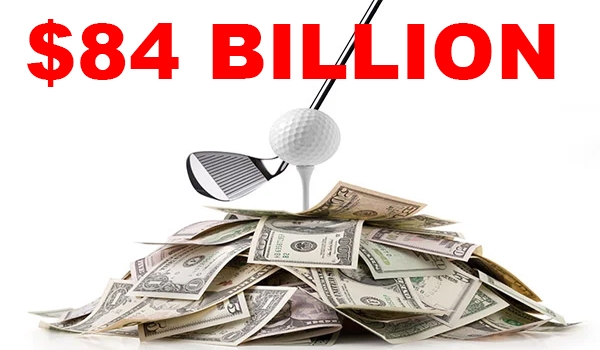APRIL 24, 2018
The latest economic impact numbers for golf are out and they’re robust.
The game is big business, directly driving $84.1 billion in economic activity across the U.S. in 2016, according to a study commissioned by the World Golf Foundation. The findings reflect a 22% increase from $68.8 billion in 2011, the last time the U.S. Golf Economy Report was released.
The game also supports almost 1.9 million jobs and $58.7 billion in compensation.
. @SteveMona1 announces the #golf industry’s economic impact is $84.1B, up 22% from the last time it was measured 5 years ago! #NationalGolfDay #GrowGolf pic.twitter.com/4QrLPZjll0
— We Are Golf (@wearegolf) April 24, 2018
The WGF and WE ARE GOLF, a coalition of the game’s leading associations and industry partners, released the new economic report ahead of National Golf Day in Washington D.C.
Golf’s leaders are gathering in the nation’s capitol to meet on Wednesday with members of Congress, the Executive Branch and federal agencies to discuss the more than 15,000 businesses involved with golf, the almost two million jobs impacted and the other economic, charitable and fitness benefits.
 YOU MAY ALSO LIKE:
YOU MAY ALSO LIKE:
WE ARE NOT GOLF, YET.
A Special Research Report of African American Exclusion
The biggest economic driver for golf was facility operations, as approximately 15,000 golf facilities in the U.S. generated almost $33.3 billion in operating revenue in 2016 — money that comes from greens fees, membership fees and range fees, golf cart rentals and spending on food and beverage. Operational revenue was up almost 12% from $29.8 billion in 2011, a noteworthy turnaround after the financial crisis that ended in 2010.
Tourism was the industry’s second-biggest contributor, as golf drove about $25.8 billion in revenue. That too is up, from $20.6 billion in 2011. New golf home construction, which closely tracks national trends, climbed to $7.2 billion after dropping to $3.1 billion seven years ago.
On-course and off-course sales of golf equipment, apparel and media were $6 billion in 2016, with the strongest sales growth in the equipment category.
Read more at Forbes.com




